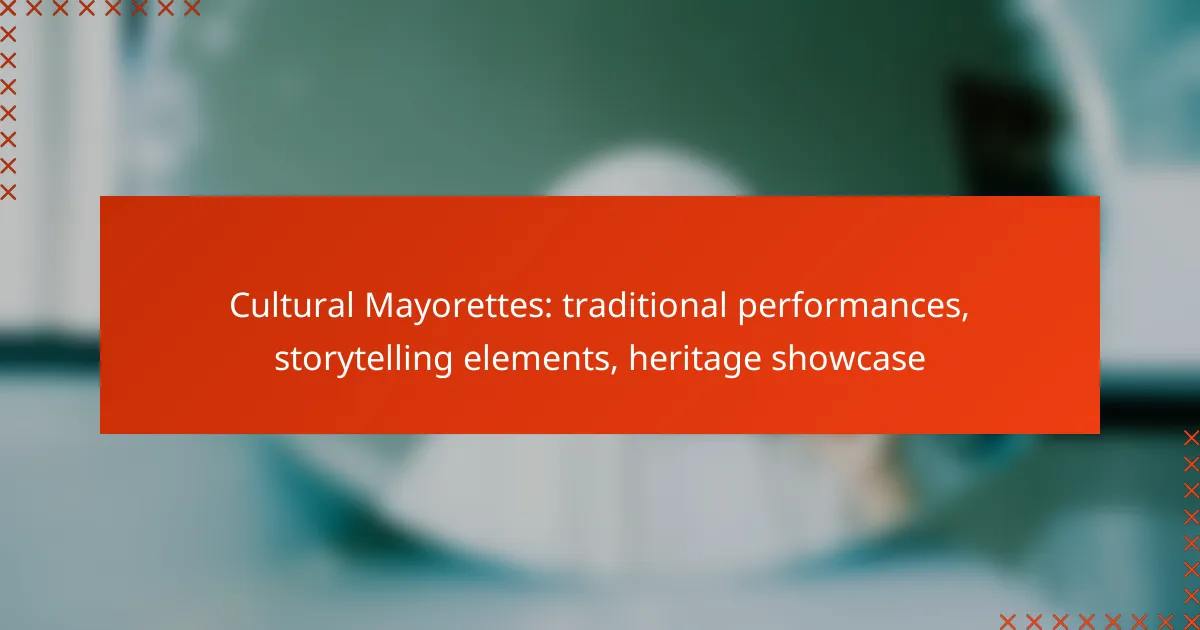Cultural Mayorettes in Canada are essential figures in preserving and showcasing traditional performances that celebrate local heritage. Through vibrant dance, storytelling, and community involvement, they bring to life the rich narratives and customs of their cultures, ensuring that these traditions continue to thrive in contemporary society.
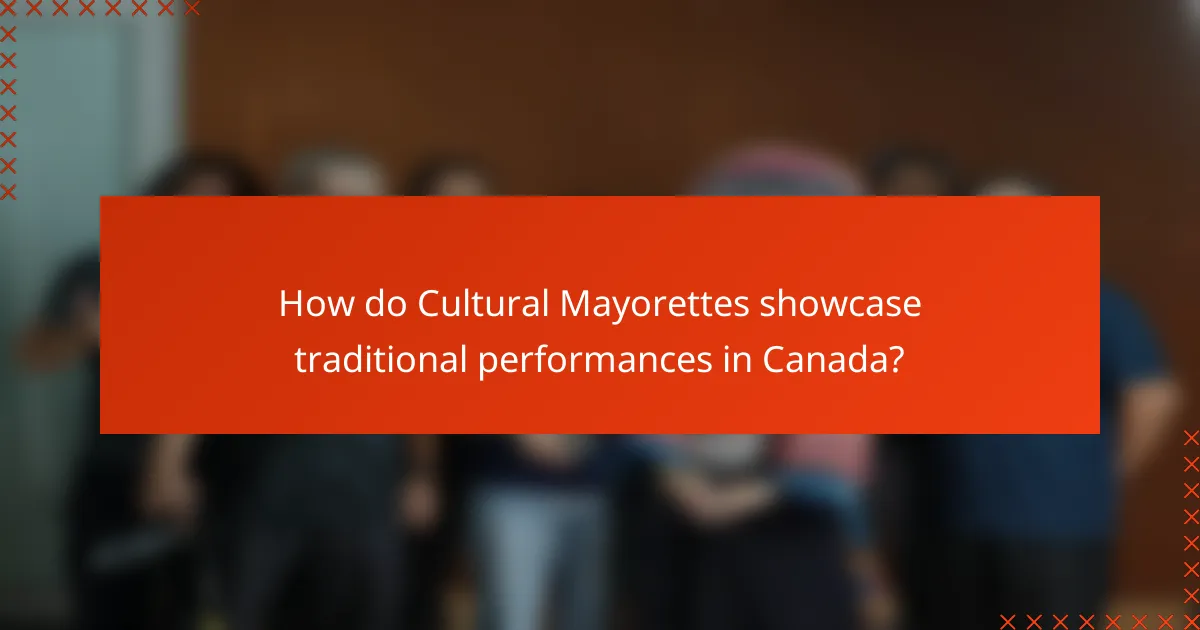
How do Cultural Mayorettes showcase traditional performances in Canada?
Cultural Mayorettes in Canada showcase traditional performances through vibrant displays of dance, storytelling, and community engagement. They play a vital role in preserving and promoting cultural heritage, often participating in various local events that highlight their unique traditions.
Live dance performances
Live dance performances are a cornerstone of Cultural Mayorettes’ activities, featuring traditional dances that reflect the diverse cultural backgrounds of the communities they represent. These performances often include intricate choreography, colorful costumes, and live music, creating an immersive experience for audiences.
Typically held at community events or festivals, these performances not only entertain but also educate attendees about the cultural significance behind each dance. Mayorettes may perform dances from Indigenous, French, or other cultural heritages, showcasing the rich tapestry of Canada’s multicultural identity.
Community festivals
Community festivals serve as a platform for Cultural Mayorettes to engage with the public and showcase their traditional performances. These festivals often feature a variety of activities, including food stalls, craft booths, and workshops, alongside dance and music presentations.
During these events, Mayorettes often lead workshops where attendees can learn traditional dances or crafts, fostering a deeper appreciation for cultural heritage. Festivals are typically organized during the summer months, attracting families and individuals eager to celebrate and learn about their local traditions.
Parades and processions
Parades and processions are significant events where Cultural Mayorettes display their traditional attire and performances in a festive atmosphere. These events often coincide with national holidays or local celebrations, drawing large crowds and media attention.
During parades, Mayorettes may perform short dance routines, interact with spectators, and distribute cultural materials, enhancing community involvement. These processions not only celebrate cultural heritage but also promote unity and pride among diverse groups within Canada.
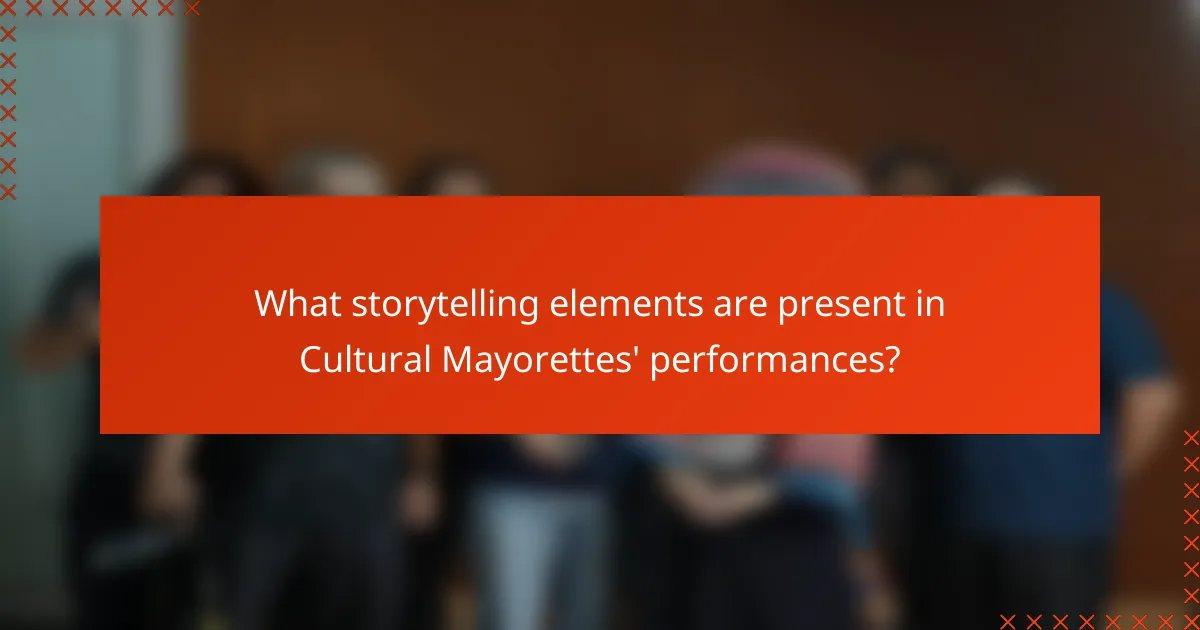
What storytelling elements are present in Cultural Mayorettes’ performances?
Cultural Mayorettes’ performances incorporate various storytelling elements that highlight local traditions and heritage. These elements often include folklore narratives, historical reenactments, and symbolic costumes, each contributing to a rich tapestry of cultural expression.
Folklore narratives
Folklore narratives are central to Cultural Mayorettes’ performances, as they convey the myths and legends of a community. These stories often feature local heroes, moral lessons, and supernatural events, engaging audiences through relatable themes and cultural values.
Performers typically weave these narratives into their routines, using dialogue, music, and movement to bring the tales to life. This storytelling method not only entertains but also educates audiences about their cultural heritage.
Historical reenactments
Historical reenactments serve as a dynamic way to showcase significant events from a community’s past. Through these performances, Cultural Mayorettes recreate pivotal moments, allowing audiences to witness history in an engaging format.
These reenactments often include traditional dances and songs that reflect the era being portrayed, emphasizing the importance of preserving history while making it accessible to younger generations. They can range from local festivals to major historical events, highlighting the community’s identity.
Symbolic costumes
Symbolic costumes play a crucial role in Cultural Mayorettes’ performances, as they visually represent the stories being told. Each costume is often rich in color and detail, reflecting the cultural significance and historical context of the characters portrayed.
Costumes may include traditional fabrics, patterns, and accessories that signify specific roles or themes within the performance. This attention to detail not only enhances the visual appeal but also deepens the audience’s understanding of the cultural narratives being presented.
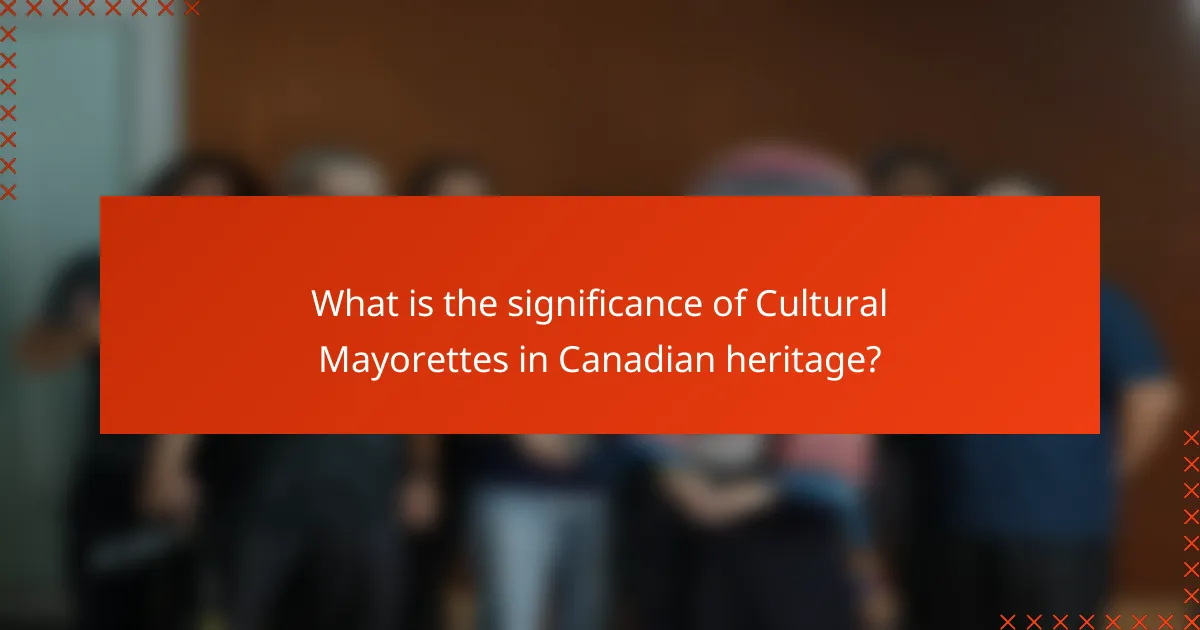
What is the significance of Cultural Mayorettes in Canadian heritage?
Cultural Mayorettes play a vital role in preserving and showcasing Canadian heritage through traditional performances and storytelling. They serve as custodians of cultural identity, promoting local traditions and fostering community engagement.
Preservation of cultural identity
Cultural Mayorettes help maintain the unique cultural identities of various communities across Canada. Through traditional attire, music, and dance, they embody the rich heritage of their respective cultures, ensuring that these traditions are passed down through generations.
By participating in festivals and events, Mayorettes create a living history that allows audiences to connect with their roots. This preservation is crucial in a multicultural society where diverse heritages coexist and enrich the national tapestry.
Promotion of local traditions
Mayorettes actively promote local traditions by showcasing regional customs and practices during performances. This includes storytelling elements that highlight historical events, folklore, and significant cultural narratives unique to their communities.
Through workshops and community events, they encourage participation and interest in local traditions, helping to revitalize practices that may otherwise fade away. This promotion not only educates the public but also instills pride in cultural heritage.
Community engagement
Cultural Mayorettes foster community engagement by bringing people together through shared experiences. Their performances often involve collaboration with local artists, musicians, and storytellers, creating a vibrant cultural scene that invites participation from all age groups.
By organizing events and workshops, they encourage community members to learn about and engage with their heritage. This engagement strengthens community bonds and creates a sense of belonging, making cultural heritage accessible and relevant to everyone.
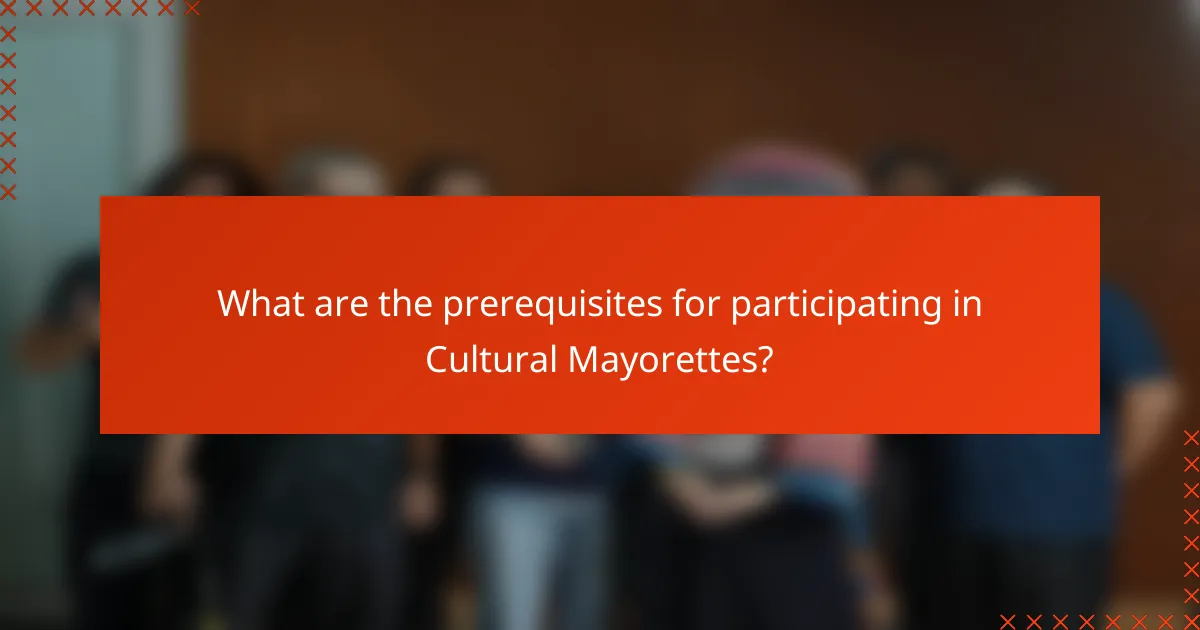
What are the prerequisites for participating in Cultural Mayorettes?
To participate in Cultural Mayorettes, individuals typically need a background in traditional dance, a solid understanding of their cultural history, and active involvement in their community. These elements ensure that performers can authentically represent their heritage through storytelling and dance.
Training in traditional dance
Training in traditional dance is essential for Cultural Mayorettes, as it forms the foundation of their performances. Participants often engage in classes that focus on specific regional styles, which may vary significantly across different cultures. Regular practice and participation in workshops help dancers refine their skills and learn new techniques.
Many mayorettes also benefit from mentorship programs where experienced dancers provide guidance. This hands-on training can include learning choreography, rhythm, and the cultural significance behind each movement, ensuring that performances resonate with authenticity.
Understanding of cultural history
A deep understanding of cultural history is crucial for Cultural Mayorettes to convey meaningful stories through their performances. Participants should study the origins of their traditions, including significant events, myths, and values that shape their community’s identity. This knowledge allows them to perform with context and depth.
Workshops and seminars led by cultural historians or elders can enhance this understanding. Engaging with community members and participating in cultural events can also provide insights into the evolving nature of their heritage, ensuring that performances remain relevant and respectful.
Community involvement
Active community involvement is a key prerequisite for Cultural Mayorettes, as it fosters a sense of belonging and purpose. Participants are encouraged to engage in local events, festivals, and cultural celebrations, which helps strengthen their ties to the community. This connection enriches their performances and promotes cultural pride.
Volunteering for community projects or joining local cultural organizations can also enhance a mayorette’s experience. Such involvement not only builds relationships but also provides opportunities to learn from others and share knowledge, creating a vibrant cultural exchange that benefits everyone involved.
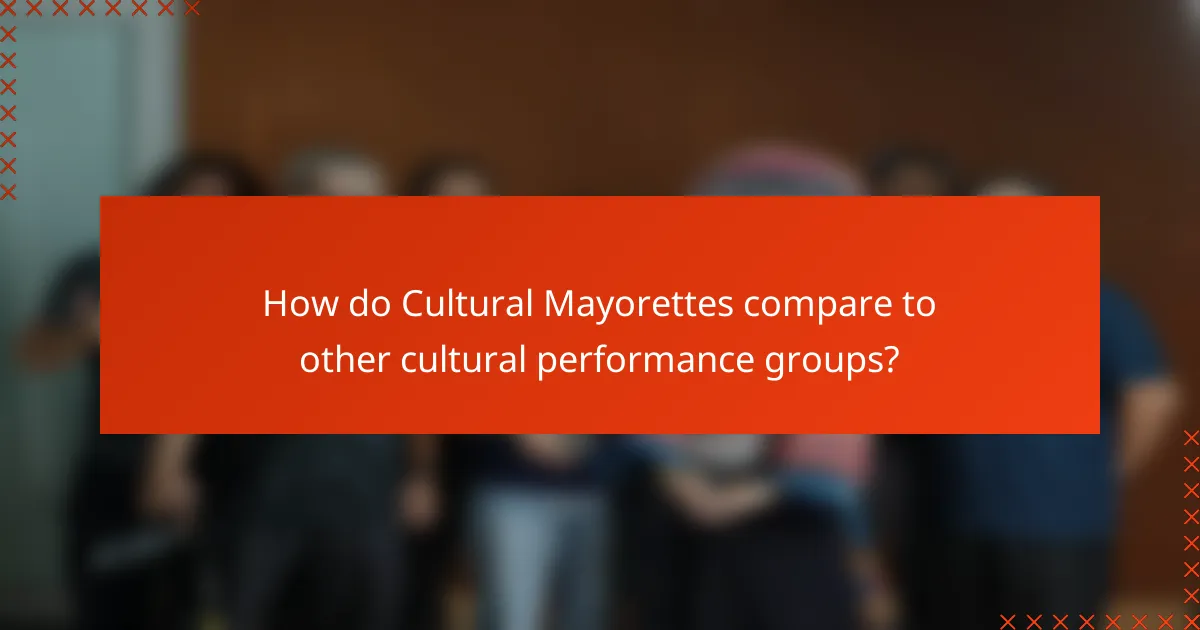
How do Cultural Mayorettes compare to other cultural performance groups?
Cultural Mayorettes are distinct from other cultural performance groups due to their unique blend of traditional storytelling, dance, and community engagement. Unlike many performance groups that may focus solely on artistic expression, Mayorettes emphasize cultural heritage and local narratives, creating a more immersive experience for audiences.
Differences in storytelling techniques
Cultural Mayorettes utilize storytelling techniques that are deeply rooted in local folklore and history. Their performances often incorporate oral traditions, where stories are passed down through generations, making the narratives highly personal and relevant to the community. This contrasts with other groups that may rely more on scripted performances or abstract themes.
In addition, Mayorettes often engage the audience through interactive storytelling, inviting participation and fostering a sense of belonging. This approach enhances the emotional connection between performers and viewers, setting them apart from more conventional performance styles.
Unique cultural influences
The cultural influences on Mayorettes are diverse and reflective of their geographical origins. They often draw from indigenous practices, local customs, and historical events, which shape their performances and narratives. This rich tapestry of influences allows for a vibrant showcase of heritage that is specific to the community they represent.
In contrast, other cultural performance groups may focus on broader themes or influences from multiple cultures, which can dilute the local significance of their performances. Mayorettes, however, prioritize authenticity and local relevance, making their cultural expressions more impactful.
Variations in performance styles
Cultural Mayorettes exhibit a variety of performance styles that are often characterized by traditional costumes, music, and choreography specific to their culture. These performances can range from lively dances to solemn rituals, each serving a purpose in celebrating community identity and heritage.
Other cultural performance groups may adopt more contemporary or hybrid styles, which can sometimes overshadow traditional elements. While this can attract diverse audiences, it may lack the deep-rooted cultural significance that Mayorettes strive to maintain. Understanding these variations helps audiences appreciate the unique contributions of Mayorettes to the cultural landscape.
